
Many adults enjoy spicing things up by adding various kinds of hot peppers to their meals, but considering how intense these peppers can be, some speculation exists concerning the effect hot peppers have on kids. While small amounts of hot peppers pose little risk to most older children with well-developed digestive systems, you may opt out of serving hot peppers to younger kids with sensitive stomachs.
Hot Pepper Risks
Capsaicin, a chemical compound found in hot peppers, does pose some potential threat for young children. The capsaicin excreted by peppers upon cutting acts as a strong eye irritant. Kids should never handle hot peppers directly, but if they do, you must wash their hands immediately to prevent them from rubbing their eyes and undergoing a painful experience. Hot peppers may even cause your child some digestive trouble, including nausea, vomiting, abdominal pain and burning diarrhea. Some kids take to hot peppers better than others, but as a general rule, the younger the child, the more sensitive the digestive system. Avoid giving hot peppers to toddlers under two years old and only introduce hot peppers in small amounts to older children.
Hot Pepper Benefits
Most of the health benefits related to hot peppers come later in life, but introducing your kids to the food early on may make them more likely to continue eating it. According to Darren Swan, a writer for Northwestern University's Medill Reports, long-term capsaicin use can help kill cancer cells, provide gastric relief, serve as an anti-inflammatory and produce fat oxidation that leads to losing weight. Additionally, hot peppers work as a homeopathic remedy against sinus infections and ear infections.
Introducing Hot Peppers to Kids
Most children are hesitant about trying new foods, and many resist eating spicy food. For best results, introduce hot peppers to your child's diet as gradual as possible. This allows your child's tastebuds and digestive tract to steadily adapt, reducing the risk of an upset stomach. Begin with a mildly hot pepper, such as a banana pepper, before introducing hotter varieties like Jalapeño and chili peppers. Cut up small amounts and mix them into spaghetti sauces, casseroles or other familiar family favorites. Avoid mixing in the seeds, which contain the strongest concentration of capsaicin. Even if your child expresses distaste for hot peppers, re-use them to allow your child a chance to get used to the taste.
Another Alternative: Sweet Peppers
If you still feel nervous about introducing hot peppers into your young child's diet, consider starting your child on sweet bell peppers instead. While bell peppers lack many of the health benefits associated with the capsacin in hot peppers, the World's Healthiest Foods explains that bell peppers still supply a decent amount of antioxidants and anti-inflammatory phytonutrients. Additionally, bell peppers contain large doses of vitamins C, A, K and E, as well as many beneficial minerals. Prepare bell peppers by cutting them into slices and serving them with a light salad dressing for a healthy snack. Alternatively, serve bell peppers stuffed or in stir-fries for dinner. Fiesta-flavored dip mixes work especially well with stir-fried bell peppers.
Related Articles
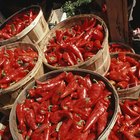
Health Benefits of Hot Peppers

Hot Pepper Oil & Skin Burn

Habanero Peppers & Itchy Skin

Substitutes for Scotch Bonnet

How to Roast & Freeze Habanero and ...

How to Cook Habaneros
How Many Calories Are in Roasted Red ...
Solutions for Too Much Heat in a ...

Can I Eat the Seeds of a Habanero ...
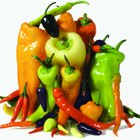
How to Pickle Peppers in Small Batches

How to Store Hot Peppers

Tea Tree Oil Cure for Halitosis
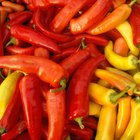
What Peppers Have Capsaicin?

Does Cooking a Habanero Pepper Make It ...
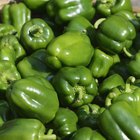
How Do I Blanch Green Peppers?
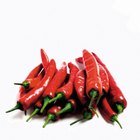
What Neutralizes a Hot Pepper Burn?

Skin Benefits of Eating Coconut Oil
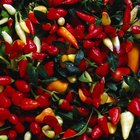
How to Freeze Cherry Peppers
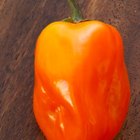
How to Grind Habanero Peppers

Vitamins for Mental Alertness
References
- The Children's Hospital of Philadelphia: Home Safety
- University of Maryland Medical Center: Cayenne
- U.S. Pharmacist; Capsaicin - Risks and Benefits; Manouchehr Saljoughian; 2009
- Medill Northwestern University; Peppers are Hot - As a Health and Diet Aid; Darren Swan; 2007
- Recipe Tips: All About Peppers
- World's Healthiest Foods: Bell Peppers
Resources
Writer Bio
Caitlynn Lowe has been writing since 2006 and has been a contributing writer for Huntington University's "Mnemosyne" and "Huntingtonian." Her writing has also been in "Ictus" and "Struggle Creek: A Novel Story." Lowe earned her Bachelor of Arts degree in English from Huntington University.
Photo Credits
Ablestock.com/AbleStock.com/Getty Images